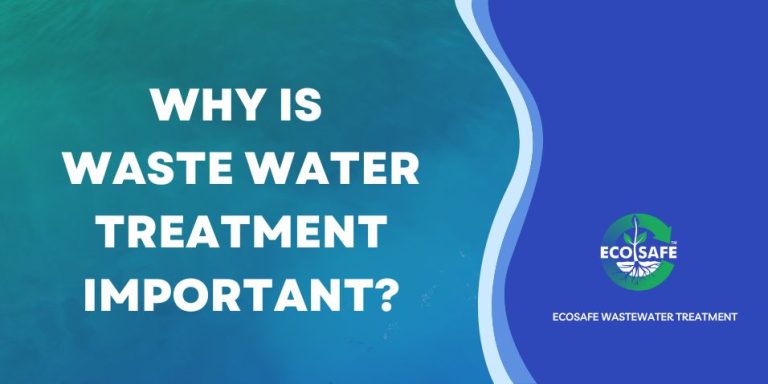Reclaim Waste Things To Know Before You Buy
Wiki Article
The Greatest Guide To Reclaim Waste
Table of ContentsReclaim Waste Can Be Fun For EveryoneReclaim Waste Fundamentals ExplainedGetting My Reclaim Waste To WorkHow Reclaim Waste can Save You Time, Stress, and Money.The Best Strategy To Use For Reclaim Waste
Discover the types, occurrences, and types of fluid waste. Residential sewer waste describes the waste and items from a domestic sewage-disposal tank. This sort of waste is created by people in houses, colleges, and other buildings. This only includes septic containers that have a drain area. The correct monitoring and disposal of domestic sewer waste require liquid waste to be transferred to a sewage therapy plant where the proper techniques and equipment are put on cleanse and deal with waste.
Business waste usually includes potential dangers, such as flammable materials or a mixture of fluid and solid waste items, and needs a more advanced and detailed disposal procedure. The disposal of industrial waste usually involves the filtration of waste prior to transport to guarantee risk-free and appropriate disposal. Industrial waste is created from byproducts and drainage of industrial procedures and manufacturing.
This type of waste can not use the very same sewer management transportation or processes as septic or business liquids. The industrial waste monitoring process needs the examination and screening of fluid waste before it goes through the disposal process (liquid waste disposal). Drainage waste is the fluid waste that originates from overflow and excess stormwater in highly booming areas or cities
Drainage waste can cause contamination and flooding otherwise managed effectively. Find out a lot more concerning sewer cleansing and waste management. Ensuring correct waste administration can avoid calamities and minimize environmental damage. Both individuals in property settings and experts in business or production markets can benefit from recognizing the procedures and laws of fluid waste monitoring.
4 Simple Techniques For Reclaim Waste
Get in touch with PROS Services today to discover our waste management and disposal solutions and the proper ways to care for the fluid waste you produce.(https://www.huntingnet.com/forum/members/reclaimwaste1.html)Do you know what happens to your water when you end, purge the commode or drain pipes the washing equipment? No? Well, it's worth knowing. This so-called 'wastewater' is not just a vital resource but, after treatment, will be launched to our land, rivers or the sea. Made use of water from commodes, showers, baths, kitchen sinks, laundries and commercial procedures is called wastewater.

water utilized to cool down equipment or tidy plant and tools). Stormwater, a form of wastewater, is drainage that streams from agricultural and urban locations such as roof coverings, parks, yards, roads, paths and gutters into stormwater drains pipes, after rain. Stormwater flows untreated straight to local creeks or rivers, eventually getting to the sea.
Unknown Facts About Reclaim Waste
In Queensland, many wastewater is dealt with at sewer treatment plants. Wastewater is transferred from residential or industrial sites via a system of drains and read pump terminals, understood as sewerage reticulation, to a sewage treatment plant.The Division of Natural Resources recommends regional governments concerning handling, operating and keeping sewerage systems and therapy plants. In unsewered areas, neighborhood governments may need homeowners to mount individual or home sewer therapy systems to treat residential wastewater from toilets, cooking areas, bathrooms and laundries. The Division of Natural Resources authorises the usage of household systems when they are shown to be efficient.
The majority of stormwater obtains no treatment. In some brand-new subdivisions, therapy of some stormwater to eliminate litter, sand and gravel has started utilizing gross toxin catches. Wastewater treatment occurs in 4 stages: Removes strong matter. Larger solids, such as plastics and other things incorrectly discharged to drains, are removed when wastewater is gone through screens.
Wastewater then streams into big storage tanks where solids work out and are eliminated as sludge. Grease and scum are skimmed from the surface area. Utilizes small living microorganisms understands as micro-organisms to break down and get rid of continuing to be liquified wastes and fine bits. Micro-organisms and wastes are integrated in the sludge. Gets rid of nitrogen and phosphorus nutrients that could trigger algal flowers in our rivers and intimidate water life.
8 Simple Techniques For Reclaim Waste
Nutrient removal is not readily available at all sewer therapy plants due to the fact that it calls for costly specialist devices. Clear liquid effluent created after therapy might still have disease-causing micro-organisms - liquid waste removal.
Many wastewater flows right into the sewerage system. Under the Act, neighborhood governments administer authorizations and licences for environmentally relevant tasks (ERAs) involving wastewater launches that may have a local effect.
Little Known Questions About Reclaim Waste.
Otherwise, samples are considered laboratory evaluation. Typically several tests are required to establish the degrees of each of the different contaminants such as oils, hefty metals and chemicals in water. Surveillance provides valid details about water high quality and can verify that licence problems are being met. The info obtained through tracking offers the basis for making water quality decisions.Report this wiki page